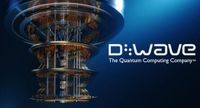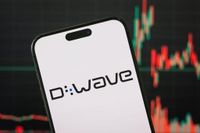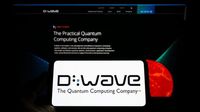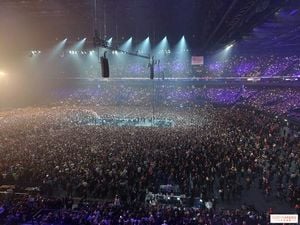D-Wave Quantum Inc. has jumped to the forefront of the quantum computing sector after demonstrating its new quantum computer can outperform one of the world’s most powerful classical supercomputers. The significant achievement marks what CEO Alan Baratz has termed “quantum computational supremacy on a useful problem,” highlighting the practical potential of quantum technologies.
The company revealed on March 17, 2025, their annealing quantum computer completed complex simulations in mere minutes—calculations deemed impossible for classical systems, which would require almost one million years to achieve the same accuracy. This groundbreaking demonstration challenges previous skepticism about quantum computing’s immediate applicability.
“Previous claims of quantum systems outperforming classical computers often faced scrutiny,” Baratz noted during the earnings call. “This time, we are demonstrating real-world problem-solving capabilities.” The demonstration serves as both a technical milestone and proof of concept for quantum applications, particularly relevant for industries tackling complex simulations.
Following this announcement, D-Wave’s stock (QBTS) surged to new heights, reaching $11.45, marking over 100% growth within just one week. Investors reacted positively, buoyed by the company reporting record bookings of $23.9 million for the fiscal year ending December 31, 2024, representing an impressive 128% year-over-year increase. D-Wave’s cash reserves also strengthened, exceeding $300 million, setting the stage for aggressive growth and development.
This bullish sentiment was not limited to D-Wave alone. Other quantum computing companies such as Quantum Computing (QUBT), Rigetti Computing (RGTI), and IonQ (IONQ) also reported significant stock gains, reflecting the collective excitement surrounding the advancements made by D-Wave. These companies collectively benefited from the increasing recognition of quantum computing's potential.
Despite previous doubts expressed by industry leaders about the realization of practical quantum technologies, Baratz firmly believes the advancements are happening much sooner than anticipated. “At D-Wave, we are seeing firsthand the value Quantum is providing today,” Baratz emphasized, contrasting comments made by Nvidia CEO Jensen Huang, who predicted another 20 years before useful quantum computers would truly emerge.
Yet, D-Wave's financial results paint a mixed picture. For the fourth quarter of 2024, D-Wave reported revenues of $2.3 million, below the expectation of $2.51 million. The company's earnings per share (EPS) were also negative at -$0.10, missing analysts’ forecasts of -$0.08. Nonetheless, the market remained optimistic with Q1 2025 guidance indicating revenues could exceed $10 million—considerably higher than previous estimates.
“We are witnessing unprecedented interest and confidence from investors following our recent successful demonstration and record bookings,” Baratz stated. “Such metrics show not only the upward momentum of our company but also the growing trust companies put in our quantum solutions.” This heightened investor confidence is pivotal as D-Wave positions itself as the premiere provider for practical quantum applications.
A recent deal with the Jülich Supercomputing Center in Germany marked the first sale of D-Wave's Advantage annealing quantum computing system, which will be integrated with Europe’s only exascale high-performance computer, JUPITER. The integration is expected to accelerate research capabilities and deepen the partnership with academic and governmental institutions focusing on quantum applications.
This strategic move aligns with the broader trend of increased funding and interest from research institutions eager to leverage D-Wave’s technology for real-world applications. The response from various sectors signifies strong market validation for quantum computing technologies.
Despite the triumphs, analysts remain cautious. Benchmark analyst David Williams, who has provided coverage on QBTS, sees the recent achievements as significant yet expresses concerns about potential overvaluation at current levels, with price targets set at $8—indicating room for potential declines.
Regardless, the consensus among analysts leans toward optimism, noting their support for the potential of quantum computing and praising D-Wave’s innovative role. With the foundations laid for substantial future growth, investors are weighing the risks and opportunities presented within the quantum computing market.
The progress made by D-Wave stands as both a challenge and invitation for continued exploration within the quantum computing sphere. Will they maintain their lead amid potential competition from larger tech players? Only time will tell, but for now, the spotlight shines brightly on D-Wave and its vision for practical quantum applications.







